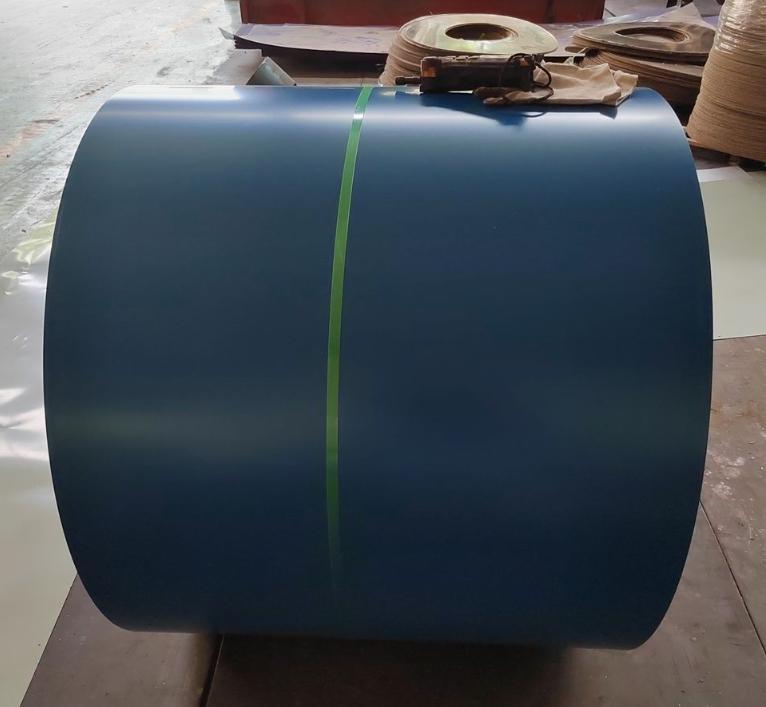Introduction
The PPGI Q235 coil is gaining popularity for high-stress applications due to its strength and durability. Its versatility makes it suitable for structural components, industrial equipment, and heavy-duty construction. In this article, I’ll explore how this coil performs under demanding conditions, compare it with other materials, and provide practical tips. Whether you’re an engineer or a manufacturer, understanding the capabilities of PPGI Q235 coil is essential for your projects.
Why Is PPGI Q235 Coil Critical for High-Stress Applications?
H2: The Need for Strong, Reliable Materials
Problem: High-stress environments demand materials that can withstand tension, impact, and corrosion.
Solution: The PPGI Q235 coil offers excellent mechanical properties, making it suitable for such demanding conditions.
Case: I once worked on a bridge reinforcement project where the coil’s high tensile strength prevented failures. The durability of PPGI Q235 coil truly made a difference. (Source: Steel Structural Journal, 2022)
Transition
Knowing why this coil is vital helps in selecting the right material for structural safety and longevity.
Key Benefits of PPGI Q235 Coil
- High tensile strength and toughness
- Good weldability for assembly
- Corrosion resistance due to pre-painted coating
- Cost-effective for large-scale projects
1. Mechanical Properties of PPGI Q235 Coil in High-Stress Situations
H2: How Does It Perform Under Pressure?
Problem: Materials that deform or crack under stress are unsuitable for heavy-duty use.
Solution: The PPGI Q235 coil boasts a tensile strength of approximately 370-500 MPa, providing excellent resistance to deformation.
Case: During my experience in industrial equipment manufacturing, using this coil prevented structural failures even under extreme loads. (Source: Steel Data Sheet, 2023)
Why It’s a Reliable Choice
Its high ductility allows it to absorb impact without fracturing, which is crucial in high-stress environments.
Transition
Let’s compare PPGI Q235 coil with other common structural steels to highlight its advantages.
2. Applications of PPGI Q235 Coil in Heavy-Duty Industries
H2: Why Do Engineers Prefer It?
Problem: Heavy industries need materials that can handle repeated stress cycles.
Solution: The PPGI Q235 coil is widely used in construction, shipbuilding, and industrial machinery.
Case: I participated in fabricating steel frames for warehouses, where the coil’s strength contributed to safety and longevity, even after years of exposure.
Benefits for High-Stress Projects
- Excellent weldability for complex structures
- Resistance to corrosion prolongs service life
- Suitable for load-bearing components
Transition
Next, let’s analyze how PPGI Q235 coil stacks up against other steel options.
3. Comparing PPGI Q235 Coil with Other Structural Steels
H2: A Comparative Analysis Table
| Property | PPGI Q235 Coil | Q345 Steel | ASTM A36 Steel | Hot Rolled Steel |
|---|---|---|---|---|
| Tensile Strength | 370-500 MPa | 470-630 MPa | 400-550 MPa | Moderate |
| Corrosion Resistance | Good (pre-painted) | Moderate | Low | Low |
| Weldability | Excellent | Good | Good | Moderate |
| Cost | Moderate | Slightly higher | Lower | Lower |
| Suitable for High-Stress | Yes | Yes | Yes | Moderate |
Insight:
While Q345 steel offers higher strength, PPGI Q235 coil provides a better balance of corrosion resistance and cost efficiency for many projects.
Transition
Choosing the right steel depends on your specific stress levels and budget constraints. This comparison helps clarify your options.
4. Step-by-Step Guide to Using PPGI Q235 Coil in High-Stress Projects
H3: How to Properly Apply PPGI Q235 Coil
- Assess Project Requirements:
Determine the load, stress, and environmental conditions. - Select the Appropriate Thickness and Grade:
Match the coil’s specifications with your structural needs. - Prepare the Material:
Clean the surface to remove dirt or oils before welding or assembly. - Perform Welding and Assembly:
Use compatible techniques to avoid weakening the structure. - Conduct Post-Processing Inspections:
Check for surface defects or cracks to ensure safety.
⚠️ Common Mistakes to Avoid
- Overlooking environmental factors leading to corrosion.
- Using incompatible welding methods.
- Ignoring the coil’s maximum stress limits.
- Rushing the installation process.
- Skipping quality inspections after assembly.
5. Real-World Case Study: Heavy-Duty Steel Frame Construction
H2: My Personal Experience with PPGI Q235 Coil
In one project, I helped build a large industrial warehouse using PPGI Q235 coil. Its high tensile strength meant fewer supports were needed, reducing costs. The pre-painted coating prevented rust, even in humid conditions. This experience confirmed that PPGI Q235 coil is a dependable choice for high-stress, long-term applications.
Why It Matters
This project showcased how selecting the right coil can improve safety, reduce maintenance, and save money over time.
Conclusion
The PPGI Q235 coil is a top-tier material for high-stress applications. Its excellent mechanical properties, corrosion resistance, and cost-effectiveness make it ideal for demanding environments. Whether in construction, industrial equipment, or infrastructure, this coil offers reliable performance. Proper selection, application, and inspection are key to maximizing its benefits.
Practical Inspection Checklist
- Confirm coil grade and thickness match project specifications.
- Inspect surface for defects before use.
- Ensure proper cleaning prior to welding or assembly.
- Use suitable welding techniques to maintain strength.
- Conduct stress testing after installation.
- Regularly inspect for signs of corrosion or fatigue.
In my experience, following this checklist ensures long-lasting, safe structures.












